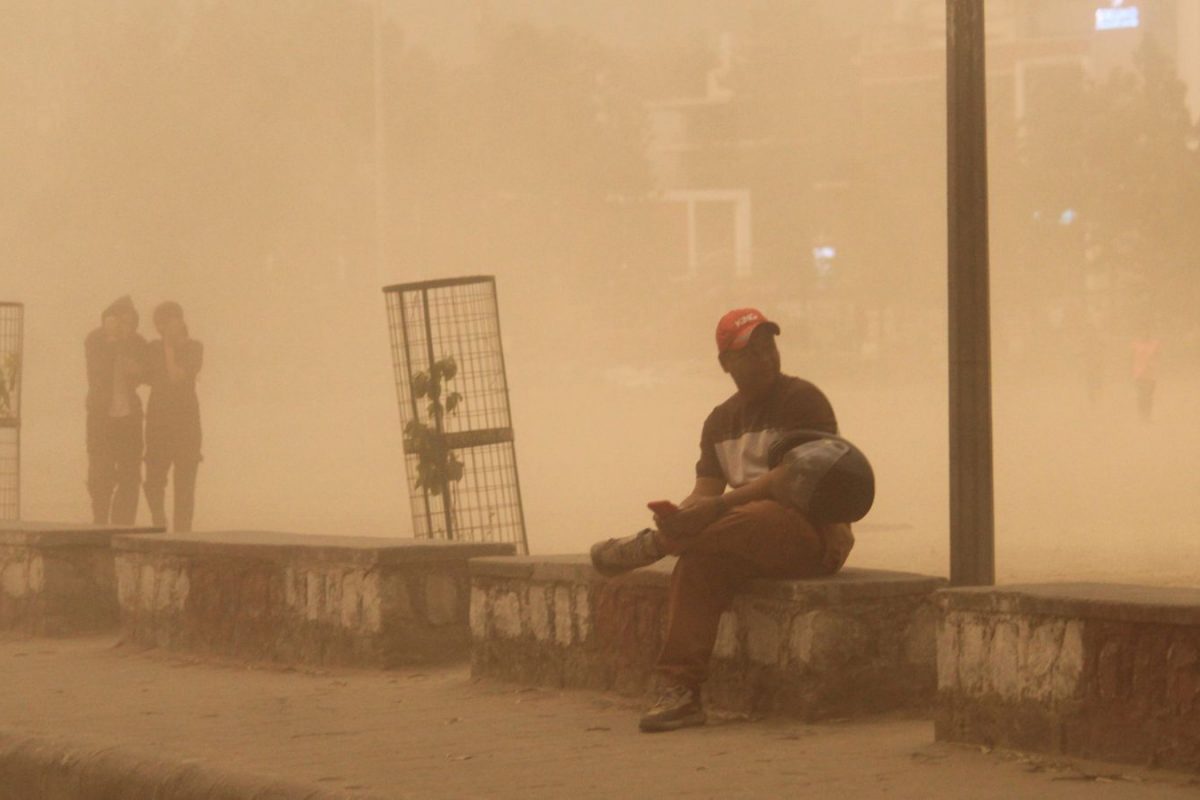

Delhi-NCR faced a dramatic weather shift today as a massive dust storm swept through the region after daytime temperatures touched a scorching 46 degrees Celsius (114°F). The intense heatwave conditions, which have persisted for weeks, created an unstable atmosphere, culminating in the sudden and severe storm.
The India Meteorological Department (IMD) had predicted thunderstorms with rain for Delhi, and the dust storm arrived swiftly, bringing with it strong winds and significantly reduced visibility. While temperatures had peaked during the day, the "feels like" temperature soared even higher due to increased humidity, reaching a stifling 50 degrees Celsius (122°F).
The dust storm caused a sharp drop in air quality, pushing the Air Quality Index (AQI) into the "poor" category. According to the Central Pollution Control Board (CPCB), an AQI between 201 and 300 is classified as "poor," indicating potential respiratory discomfort for many residents. Fine dust particles swept into the lower atmosphere, reducing visibility from 4,500 meters to 1,200 meters in a short span. While wind speeds peaked, visibility never dropped below the threshold of 1,000 m, so IMD officials clarified that the phenomenon did not qualify as a duststorm.
Residents of Delhi-NCR have been sharing their experiences of the intense storm, with reports of dust settling everywhere, windows being flung open, and shattered windowpanes. Many individuals, particularly children, experienced coughing, sneezing, and watery eyes due to the dust exposure.
Health experts advise residents to stay indoors during dust storms, preferably in rooms without windows, and to keep doors and windows securely locked. Face masks and protective eyewear are recommended for those who must venture outside. In case of irritation, such as breathlessness, coughing, or sinus discomfort, rinsing eyes with clean water and inhaling steam can help clear dust particles.
The Delhi government has been working on measures to combat the extreme heat, including the "Delhi Heat Action Plan 2025." This plan includes establishing cooling centers in densely populated areas, implementing stricter routines in schools to ensure children stay hydrated, and launching Cool Roof pilot projects to reduce urban heat absorption.
While the dust storm brought some respite from the extreme heat, the IMD forecasts indicate that the coming days will continue to be warm, with temperatures remaining in the mid-40s Celsius. There is a possibility of thunderstorms and light rain, which could further improve air quality and provide some relief from the heat. Residents are advised to stay updated with the latest weather forecasts and take necessary precautions to protect themselves from the adverse effects of both the heat and the dust.